Disadvantages of LED Lights and Common Problems – Are They Worth Buying?

“LED” refers to semiconductors that generate light when exposed to low electrical current.
These light-emitting diode (LED) lights are gaining prominence by the day as they are affordable and more efficient. Despite that success, their impact on health poses a significant risk, especially if overlooked.
According to the American Medical Association, LED technology threatens human health. Prolonged exposure to LED light increases the risk of age-related macular degeneration. Additionally, short-term exposure to high levels of LED light can result in retinal alterations.
LEDs emit light from the high-energy, short-wave end of the visible light spectrum. This light spectrum regulates our sleep cycle and maintains a healthy circadian rhythm. It explains why people experience mild headaches, itchiness, and redness in their eyes.
After reading this article, you will have all the knowledge essential to take the appropriate precautions.
Overview
According to findings by Energy Star, LED lighting produces up to 90% more light than incandescent bulbs. That efficiency and affordability have contributed to their adoption in households.
The technology is useful but also offers a threat that, if ignored, will do more harm than good. What starts as eye strain develops into a headache and later harmful radiation. This article will cover all those factors and offer useful guidance.
Disadvantages of LED Lights
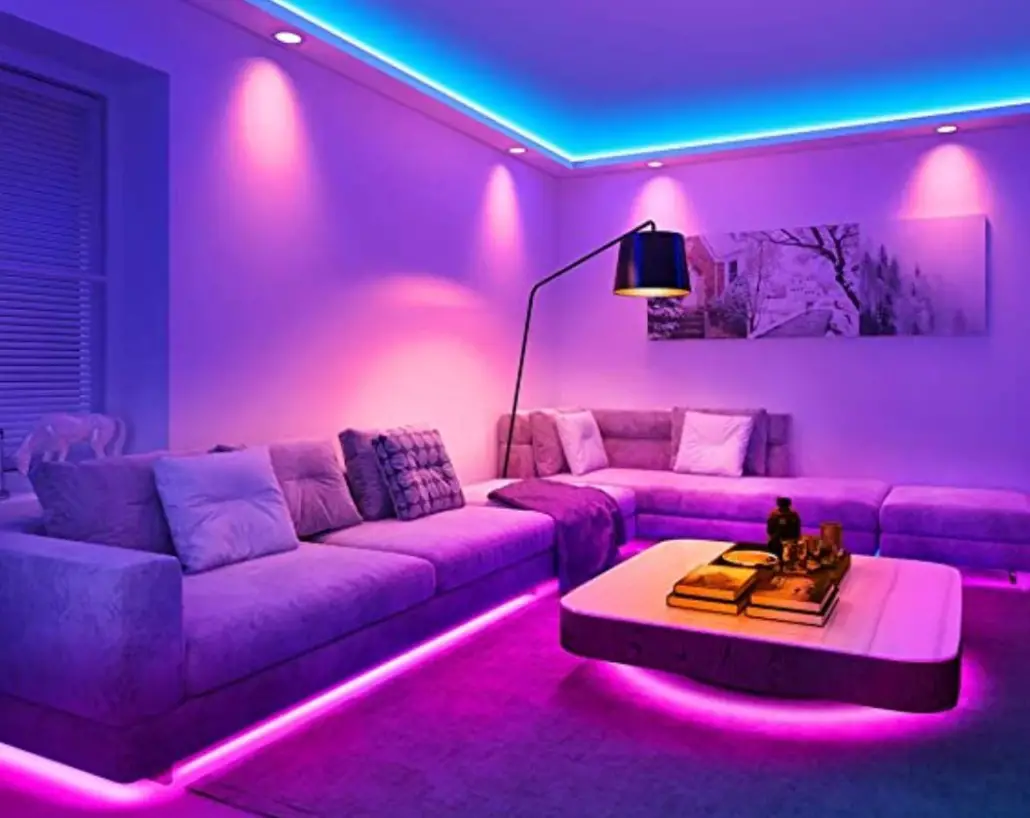
Although LED lighting has many benefits, you should consider the negative elements. Some of them might lead to irreversible health hazards. They include:
- Higher initial cost
- Light quality
- Lower wattage
- Temperature dependence
- Voltage sensitivity
- Electrical polarity
- Blue hazard
- Efficiency drop
- Impact on insects
- Use in winter conditions
- Compatibility – Light intensity can’t be dimmed or increased
- Mixed quality on the market
How Do Led Lights Work?
LEDs are just small light bulbs that are simple to integrate into an electrical circuit. However, they don’t have filaments that burn out, need less current, and don’t become very hot like incandescent bulbs.
They last as long as a typical transistor and are only lit by the flow of electrons in a semiconductor particle.
LEDs, or light-emitting diodes, perform diverse functions on various devices. They illuminate watches, light up digital clocks, and signal when your appliances power on.
They can also create images on a large television screen or ignite traffic lights. An LED lasts thousands of hours longer than an incandescent bulb, which only lasts a few hundred. Because of these advantages, LEDs are among the useful technologies for LCD TV lighting.
LED bulbs generate light by transmitting an electric current through a diode-semiconductor component. The component uses the electroluminescence principle to release photons or light.
That means a substance—in this case, a diode—casts light when electricity is supplied, which is how phase light-emitting diodes work.
The “p-n junction” is a junction where electrons jump from one side to another (an electron-full side to an electron-deficient side). When the p-n junction gets power, the electrons become anxious to move.
The side that lacks electrons wants to get filled up with the charged electrons from the other side. This process produces light as a result.
What Are the Different Types of LED Lights?
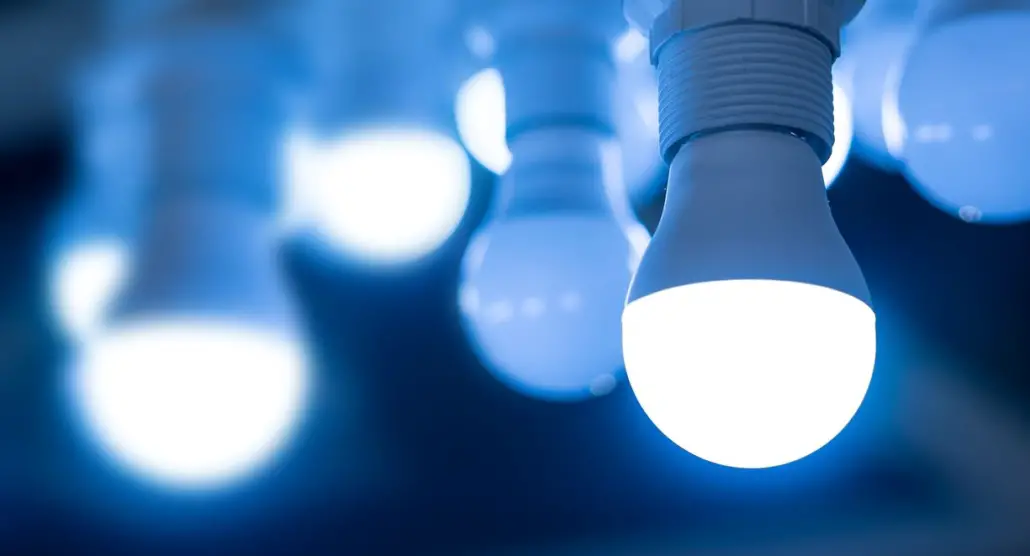
Recently, the design options for LED lighting have had very limited options. Technological advancements allow you to get various styles, including candles, golf balls, GLS, reflectors, spotlights, and tubes.
They are available in screw and bayonet fittings and have varying powers equal to standard incandescent bulbs. The price is also comparable to other lights, which can save on electricity costs.
LED Lighting Tubes
They substitute fluorescent tubes, which might be a single-hanging replacement in some circumstances. The other designs need new wiring and ballasts.
It works by providing several miniature LED lights along the length of the tube, and it’s available in any appropriate size.
The good thing about them is that they save up to 50% energy compared to fluorescent tubes. They are also durable, with up to 50,000 hours of operation. Additionally, they don’t release toxic chemicals as broken fluorescent lamps do.
Dimmer Switches
You can use a dimmer switch with LED lighting like regular light bulbs. The only catch is that LED lighting requires a new dimmer switch; your old one, which may have functioned with an incandescent bulb, will not.
The simple fact that LED lighting operates at a lower wattage than traditional bulbs is the cause.
COB LED
In a procedure known as “chip-on-board,” bare LED chips get in direct contact with a substrate to produce LED arrays. Compared to more traditional LED technologies, COB LEDs provide many advantages.
The biggest benefit of COB technology is that it allows for a much higher “lumen density” or a higher packing density of the LED array. That, in turn, results in higher intensity and more uniform light.
Additionally, despite the number of diodes, COB devices only have one circuit and two contacts on the entire chip. This single-circuit architecture simplifies the entire LED device, regardless of the number of diodes on the chip.
Graphene LED Lights
According to a late 2015 report, scientists identified LED filaments with graphene coating as the most available. They cost less than normal lights and guarantee a 10% reduction in energy costs.
Scientists working at the University of Manchester University discovered graphene. That discovery led to their winning the Nobel Prize in Physics. For instance, the current innovations aid in developing creative ways to use sturdy materials.
Graphene comprises a single layer of carbon atoms thinner than human hair and stronger than steel. It also makes a great conductor. Due to its remarkable properties, graphene has a wide range of potential uses. They include:
- Water filtration can provide clean water for millions of people worldwide.
- Faster charging can recharge an electric car within a few minutes.
- Development of modern electronic components, such as bendable phones and faster transistors.
Technicians have developed Graphene LED lighting, with the first generation already on the market. With the addition of a graphene layer, the light bulbs are essentially regular LED filaments.
Additionally, the bulbs are more energy efficient because graphene helps with heat dissipation. As a result, they need a lower wattage to produce the same brightness.
Color LED
Everybody gets drawn to the color LED, which comes in three variations: cold white, warm white, and daylight.
- Warm white is like modern halogen lighting and is used in most households.
- Fluorescent tubes found in stores and offices are colorable to cool white.
- The primary purpose of daylight color, bright white with a tint of blue, is to emphasize actual color.
Organic LED
The basic principle of light-emitting diodes gets applied to the organic LED. As suggested by its name, the LED comprises organic materials.
The fundamental light-emitting diode emits light from specialized PN junctions that serve as the light’s focal point.
That is by use of elemental, inorganic semiconductors with varying quantities of dopant. The organic LED display creates a diffused light area from its thin sheets.
The glass substrate is typically printed using a thin film substance. The semiconductor-based circuit delivers electrical charges to the integrated pixels illuminating the LED.
The efficiency of LED technology is always rising, and it has no limitations to what you may use it for.
SMD LED
Surface Mounted Devices, often known as SMDs, are a new type of LED lighting. Bulbs incorporate SMD chips that increase brightness, making them a more practical option for homes and offices.
The Surface-Mount Device LED is a special category having a 3-in-1 encapsulation or integration of all three colors (Red, Green, and Blue) in a single device.
The front of the LED module is polarized before being assembled on the circuit board. Carry out this procedure with top-notch tools to avoid problems like loose or faulty LEDs.
What Are the Common Uses of LED Lights?
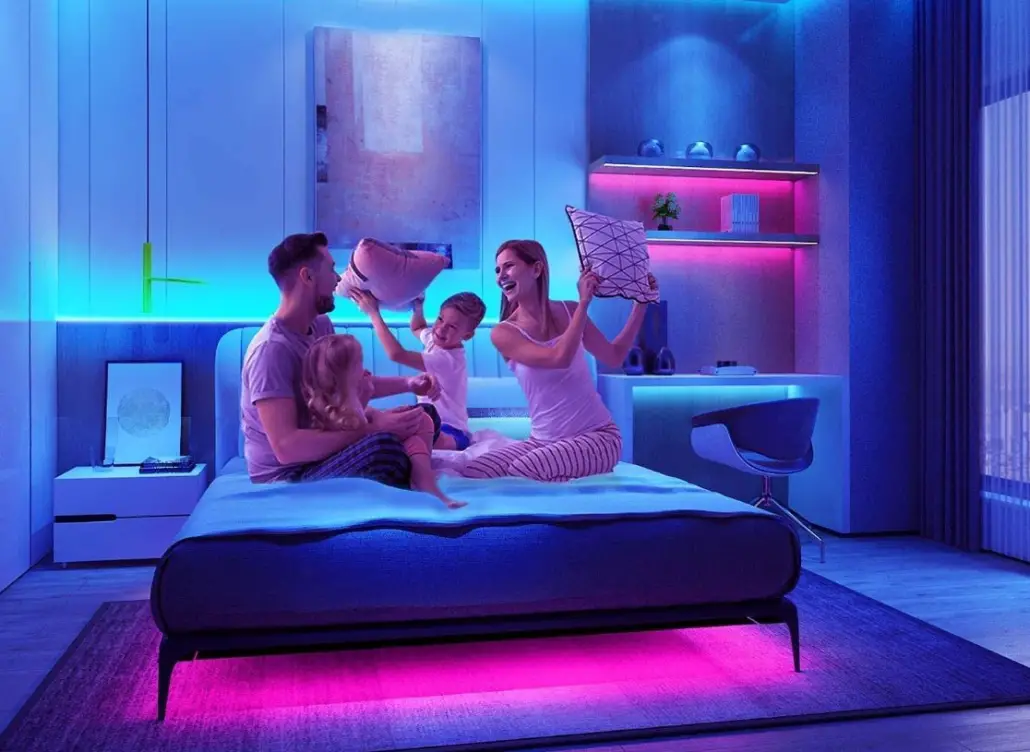
Since the invention of LEDs, scientists and engineers have expanded their capabilities. LEDs are now used in several places, from traffic lights to video screens at sporting events.
In contrast, in the past, they were mostly used as indicator lights in electronic gadgets. Here is a detailed analysis of their uses.
Daily Applications
While going about your daily activities, you’ll likely notice LEDs in several establishments. For instance, if you go outside at night, there is a significant probability that the street lights are LEDs.
They may also be ornamental lights that turn on around a building. That is because of LED lighting’s dependability and almost maintenance-free operation.
You might also see LED lighting at the gas station, parking lots, and stage lights in the theater. Additionally, they work well in small devices like flashlights, strobe lights, and cell phone cameras.
Residential Lighting
Although the cost of LED lighting kept it out of most households in the past, the prices have been reducing over time. For LED lighting applications, this makes homes a realistic choice.
Homeowners can enjoy using LED lighting in the same ways as business owners. Long-lasting and energy-efficient LED lights are available.
Besides, many people always seek environmentally responsible solutions to improve their lifestyles. Due to their recyclable nature and lack of mercury, LEDs provide that.
Lastly, when used outside, LED bulbs often do not attract insects. The majority of LED lamps don’t emit UV light, which is what causes bugs to swarm.
Lighting in Offices and Retail Stores
One of the most widespread uses for LED lighting is in offices. Owners and managers are paying more attention to the general well-being of their employees.
Lighting is one method they are using to do this. Offices can provide bright lighting for their staff by upgrading to LED lights. They can see better and have less eye fatigue as a result.
The color of the light can also assist in uplifting moods and comforting people.
Lighting in Healthcare
According to a 2006 American Institute of Architects (AIA) recommendation, hospitals should switch to LED lighting instead of fluorescent or CFL bulbs.
Since then, LED lighting has grown in popularity due to its long lifespan and capacity for energy conservation.
Additionally, LEDs don’t radiate heat in any way. Because of that, LED lighting is preferable for medical lighting applications. There are so many different color temperatures for LEDs.
That can help hospitals to relax patients who may be anxious or agitated from being there.
Quick Facts Overview
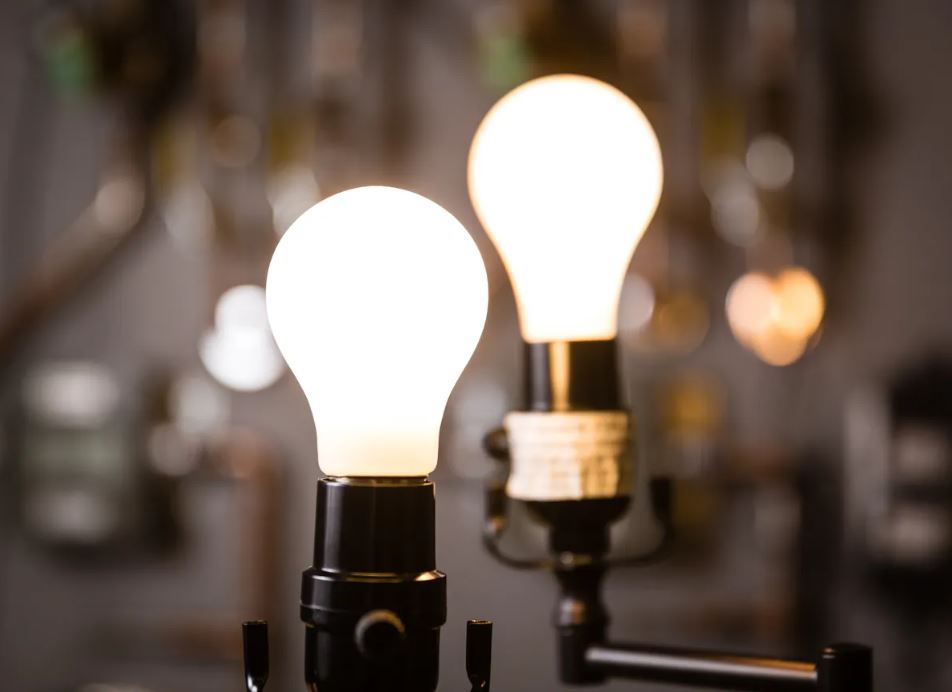
If you are contemplating whether to use LED lighting anywhere, here is a quick list of all the necessary information.
The Eiffel Tower Uses LEDs
When you think of France, one landmark comes to mind, The Eiffel Tower. Many small LEDs light the Tower at night, making it a beautiful lighting design.
LED lighting can control insects and bacteria.
If you use LEDs on food displays, they will repel insects and limit bacteria growth.
LED lighting is Eco-friendly.
The bulbs are mercury-free, making them recyclable up to 95%.
LED lighting is cost-efficient.
If you use LEDs as lighting, you will save your finances because they use less energy.
LED lights are durable.
Unlike incandescent bulbs, LED bulbs don’t sustain any exterior harm when dropped. You won’t have broken glass or mercury to clean up.
Are LED Lights Worth Buying?
LEDs will undoubtedly fulfill your needs if you are looking for an affordable and efficient lighting option. They are durable, use less energy, and can suit any functionality you may prefer.
To answer the question, yes, LEDs are worth your money.
Disadvantages of LED Lights

Higher initial cost
On a capital cost basis, LEDs are now more expensive per lumen than most conventional lighting solutions. The low lumen output, necessary drive electronics, and power sources contribute to the increased cost.
Light quality
Compared to a black body radiator like the sun or incandescent light, most cool-white LEDs have very different spectra. Traditional fluorescent bulbs often perform worse in color rendering than modern white LEDs.
Voltage sensitivity
LEDs need a voltage supply above the threshold and below the rating. You may use series resistors or current-regulated power sources.
Blue hazard
Cool-white and blue LEDs have drawn criticism for producing levels of blue-light hazards that exceed eye safety guidelines. ANSI/IESNA RP-27.1-05: Recommended Practice for Photobiological Safety for Lamp and Lamp Systems.
Temperature dependence
The operational environment’s ambient temperature has a significant impact on LED performance. High ambient temperatures may cause the LED package to overheat, which could cause the gadget to malfunction.
It takes adequate heat-sinking to maintain extended life. That is crucial when considering automotive, medical, and military applications. The tool must function across a wide temperature range and have a low failure rate.
Compatibility – Light intensity can’t be dimmed or increased
LEDs simulate a Lambertian spread of light rather than a “point source” of light. Therefore, employing LEDs in applications that demand a spherical light field is challenging.
Divergence below a few degrees is not possible with LEDs. Lasers, in comparison, may create beams with divergences of 0.2 degrees or less.
Electrical polarity
LED lights will only operate when the electrical polarity is correct. In contrast, incandescent light bulbs operate regardless of the electrical polarity.
In such an instance, you can automatically use rectifiers to match the source’s polarity to LED devices.
Impact on insects
Since LEDs entice insects more than sodium-vapor lights, there have been speculations of food web disruption.
Use in winter conditions
Snow can obscure LED traffic control lights. That can cause accidents because they produce less heat than conventional electric lights.
Efficiency drop
When electric current rises, LED efficiency declines. Higher currents also result in more heating, which reduces the LED’s lifespan.
These factors regulate the current that can pass through an LED in high-power applications.
Mixed quality on the market
You will likely find many LED products as this technology is still gaining adoption in various demographics. That is due to high demand, which no single producer can meet independently.
It results in the production of low-quality items, which can present many hazards. It is, thus, ideal for authorities to enact mechanisms to regulate the space.
Common Problems With Led Lights
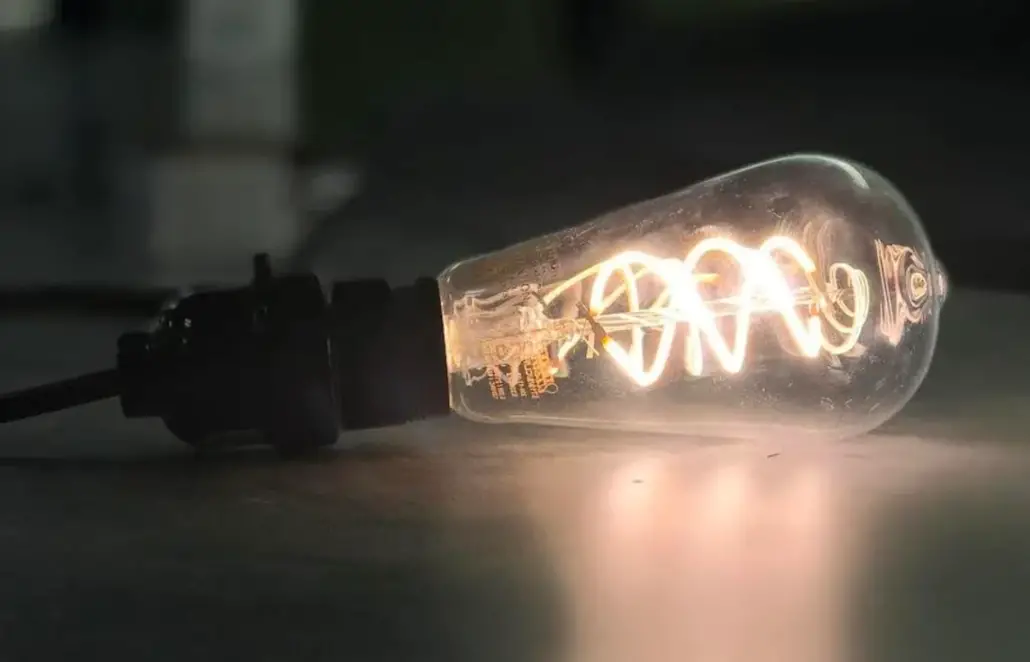
The Light Is Disturbingly Bright
Although we prefer bright lighting, excessive brightness can often be uncomfortable. It’s possible to create a bright light by utilizing an eye-irritating bulb or employing more watts than necessary.
You can reduce these problems by blocking extra light with a fixture.
You could spend money on a dimmable bulb and install a switch to make this feature easier to control.
To safeguard your eyes, choosing a fixture with a lower Kelvin temperature rating or one that uses a warmer spectrum is crucial.
Incorrect LED Light Installation
If your lighting system connection is wrongly configured, you cannot expect your LED lights to work well. Here are some examples of incorrect LED lighting installation:
- Inappropriate lighting distribution
- Short-circuit-prone cables that are loose or exposed
- Recurrent breakdowns
Before installing contemporary LEDs, you should establish a guideline to avoid these accidents. Decide how many fixtures you install to achieve a flawless installation process.
Make sure your electrical supply can accommodate them as well. Examine each fixture’s placement thoroughly to make sure there is enough lighting.
Additionally, you should research the proper kind of LED lighting needed for your selected layout.
Overheating LED Light
Allowing LED bulbs to become too hot will cause them to break down too soon. The only guideline for maintaining your LEDs is that they must remain cool.
Even the most advanced LEDs with built-in heat sinks cannot handle abrupt high currents.
Anytime you install an LED, think about where to locate it and how that will affect how cool it will be. The heated air can pleasantly leave if you position the bulb downwards or upwards.
Remember that if you install an LED light downward, you must leave the top of the fixture exposed to allow any extra heat to escape.
Not Complying With The Recommended Current
Current fluctuations may impact an LED bulb’s lifespan. Since LEDs need constant and consistent current, a current rush can be quite harmful.
For instance, screwing in an LED light while it is on can destroy the semiconductors in the bulb.
That may also happen if your LED light switches on and off too frequently, resulting in an unexpected current rush.
Better-quality bulbs have a soft start feature designed to prevent damage from a current surge to get around this issue. Your LED light will stop working if the current drawn by your circuit is higher than its capacity.
Complex Circuits
According to experts, the circuit board is where problems with lighting are usually found six out of ten times. In regards to LED technology, this assertion is true.
The more intricate the bulbs are, the more issues they have and the older, more dated circuits they are supposed to work on.
As technology advances, lighting also does. That is true for LED lights with extra features like a Wi-Fi connection or built-in dimming effects. The progress of current circuitry is being driven by LED lighting.
Buzzing Noise
Another typical problem with LED lighting is a buzzing noise. Typically, a circuit overload causes that.
Your LED bulb won’t go out if it’s getting a little bit more voltage; instead, it will make a humming sound. The electronic components vibrate as the voltage increases, producing that sound.
Comparing the voltage that flows through your socket with the voltage that your bulb or lamp accepts is the best course of action. It will probably find a solution to the issue.
LED Lights vs. Halogen – Which Is Better?
A halogen light is an incandescent bulb that contains halogen gas. The tungsten filament may burn at a higher temperature than with a standard incandescent light bulb. Despite being brighter, halogen lamps generate a lot of heat.
A LED, however, functions very differently. A semiconductor light called an LED employs a diode to transform electrical energy into light.
LED lights offer more color temperature options, are more energy-efficient, and last longer. Although they cost a little extra, their long lifespan makes up for this.
LED Lights vs. Incandescent – Which Is Better?
The way the two emit light is where the biggest distinction lies. Incandescent bulbs produce light and heat by heating a wire filament to a specified temperature.
LEDs don’t have filaments and work entirely differently. An electrical device called a diode has two electrodes and permits the flow of electricity through it.
LEDs outdo incandescent lights in many ways, from durability to features and functionality.
LED Lights vs. Fluorescent – Which Is Better?
Compared to incandescent light, LED and fluorescent lighting are more energy-efficient. Most people would consider an incandescent bulb a classic type of light bulb.
LED lighting is the best option for any business or industrial site. Although fluorescent tubes use less energy, they are less durable than LED tubes. An LED lamp is safer than a fluorescent bulb since it has no toxic materials and is more durable.
LED Lights vs. Regular Bulbs – Which Is Better?
In every respect, LED lighting is superior to regular types of lighting. Their usage of electricity is more effective.
They are also safer because they are cooler and don’t waste energy on heat. Thirdly, they outlast the alternatives by a considerable margin.
LED Lights vs. HID – Which Is Better?
The two systems use completely different approaches to lighting production. In contrast to HID lights, LEDs are a solid-state technology that includes inert gas inside the glass housing.
HIDs produce a lot of heat, most of which falls in the IR and UV spectrums. LEDs don’t use energy in the form of waste heat because they only emit across a limited section of the visible light spectrum. LEDs still outdo HID lights, just like the other types.
LED Lights vs. Xenon – Which Is Better?
LEDs and HIDs outperform halogens in brightness and durability. HIDs are superior and brighter for automobiles with projector lenses, whereas LEDs are better for reflector headlamps.
Combining the two for the hybrid projector-reflector headlamp will produce the highest light output.
Who Should Buy Led Lights?
LED lighting has many innovative qualities, including reliability, durability, and longevity. These dependable attributes helped the LED get greater attention from many people.
Students, engineers, and enthusiasts of electronic devices enjoy using LEDs in their spaces. You can use LED lights anywhere, for example, in schools, hospitals, offices, and business premises.
What Wattage Do You Need?
Clients may get a good idea of an incandescent bulb’s brightness by looking at its wattage rating before purchasing one. The bulb is brighter the more watts it has. LED bulbs, however, are an exception to that rule.
LEDs inherently have a lower watt rating because they are made to use less energy. As a result, watts are of no value in estimating brightness.
Bulb manufacturers are now using lumens to assess bulbs as a solution to the issue. That gives you a more precise idea of how much light an LED will produce.
Best Three LED Lights
Amico LED Garage Light
These are adjustable LED panels with top-quality chips. Each light provides 12000 lumens of brightness. Their features include;
- High-temperature and corrosion-resistance.
- They never heat, even after being on for hours.
- They also provide up to 50,000 hours of service.
- They have a two years warranty.
Meconard Ultra-Thin LED Recessed Ceiling Light
These are adjustable LED panels ideal for garage lighting. They also provide 12000 lumens of brightness. Their features include;
- They are IC-rated, ETL, and Energy Star certified.
- They provide up to 50,000 hours of service.
- You can choose the color you need by switching the button on the junction box.
- They have a three-color temperature.
- They have a five years warranty.
Zouzai 5CCT Ultra-Thin LED Recessed Ceiling Light
These lights are ultra-thin with a smooth dimming feature. They are suitable for applications such as kitchens and workplaces like Garages and Corridors. Some of their features are as follows.
- They are IC-rated and ETL certified.
- You can choose the most-desired color by clicking on the side of the box.
Conclusion

Since they have been in use for a while, LEDs are not going anywhere.
Compared to traditional light sources, LEDs are a better choice. They offer improved efficiency, light quality, durability, and versatility.
If you still need to convert your lights to LED, do so and take advantage of this technology’s perks.


